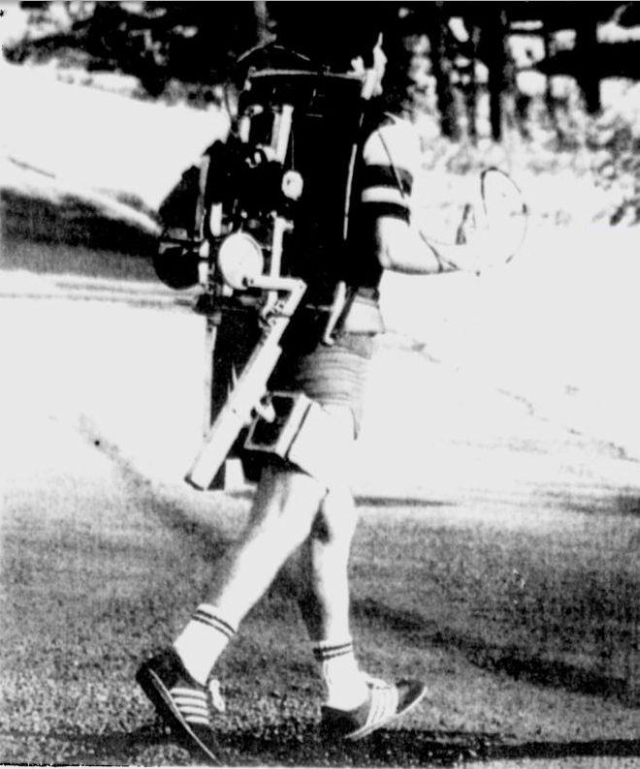
Jogging Machine Invented, Awaits Market .
Daytona Beach Morning Journal – Dec 15, 1978
HYDE PARK. NY – Burt Shulman gently touched the throttle of the little machine strapped to his back. Suddenly he wasn't Burt Shulman at all, but Mercury about to become Icarus, a quiet mechanical engineer who was now the Match of Captain Marvel or maybe even Wonder Woman.
He was running, bounding at 15 or 20 miles an hour, on the road in front of his house and it looked so easy. It didn't seem to be going fast until a visitor tried to race him. But the machine made Shulman zoom away as though the visitor were standing still.
With the engine off, sitting in his living room overlooking the Hudson River,Shulman, 26, spoke of many things he had invented- the gadget that blows smoke away from the noses of people who use soldering guns; the alarm clock radio that senses when it is going to snow or rain and wakens the sleeper earlier than usual; the tiny machine designed to help improve the circulation of deskbound executives by continuously moving their feet up and down; a device that permists motorists to breathe fresh air when they are caught in traffic jams, and even ultrasonic tweezers for the permanent removal of ingrown hairs.
But it is the jogging machine that everyone in these parts seems to know about because it can put the three minute mile within the grasp of flabby dreamers.
"I suppose that I really ought to call it a running machine," said Shulman. "I got the idea after my father bought one of those living room jogging machines. I thought, why not make a machine that would assist somebody who wanted to run outside?"
He took a one-horsepower, two-cycle engine, mounted it on an aluminum backpack, the sort worn by hikers, and added a lever that takes the engine's rotary action and provides a pushing action with pads against the thighs. When thigh muscles move that fast, it is relatively easy for calf muscles to keep up.
Shulman is not addicted to jogging but he keeps the machine for his own use and thinks it may have application for some disabled people who could walk if they had such a mechanical aid. The machine doesn't have to propel you quickly; it can work at much lower speeds.
But there seems no immediate prospect that Shulman's jogging machine – or any of his other inventions – will be mass produced in the near or even distant future.
Shulman, who earns his living by designing the housing of computer terminals at Internation Business Machines in Princton, N.J., sat and looked at a formidable pile of rejection slips he has received from companies that make cars, toys, athletic equipment and other products.
It seems as though the American inventor of yore – the lonely figure who built a better mousetrap in his garage, then made his fortune by selling it to a manufacturer – is having a rough time of it.
"Getting one's idea marketed is almost impossible," said Shulman. Companies talk of the 'HIH' factor when they receive ideas from outside. NIH stands for Not Invented Here and they would rather their own engineers created new ideas – not outsiders."
Shulman says manufacturers do this because it is far less expensive to pay staff salaries for reasearch and development than to buy ideas from freelancers that can cost millions of dollars. Nevertheless, Shulman says he plans to keep inventing things in the hope that some manafacturer will beat a path to his door.
There is a newsreel compilation clip that has an earlier version of a walking/jogging machine, but no preview. It was also shown on a movie called "Gizmo".